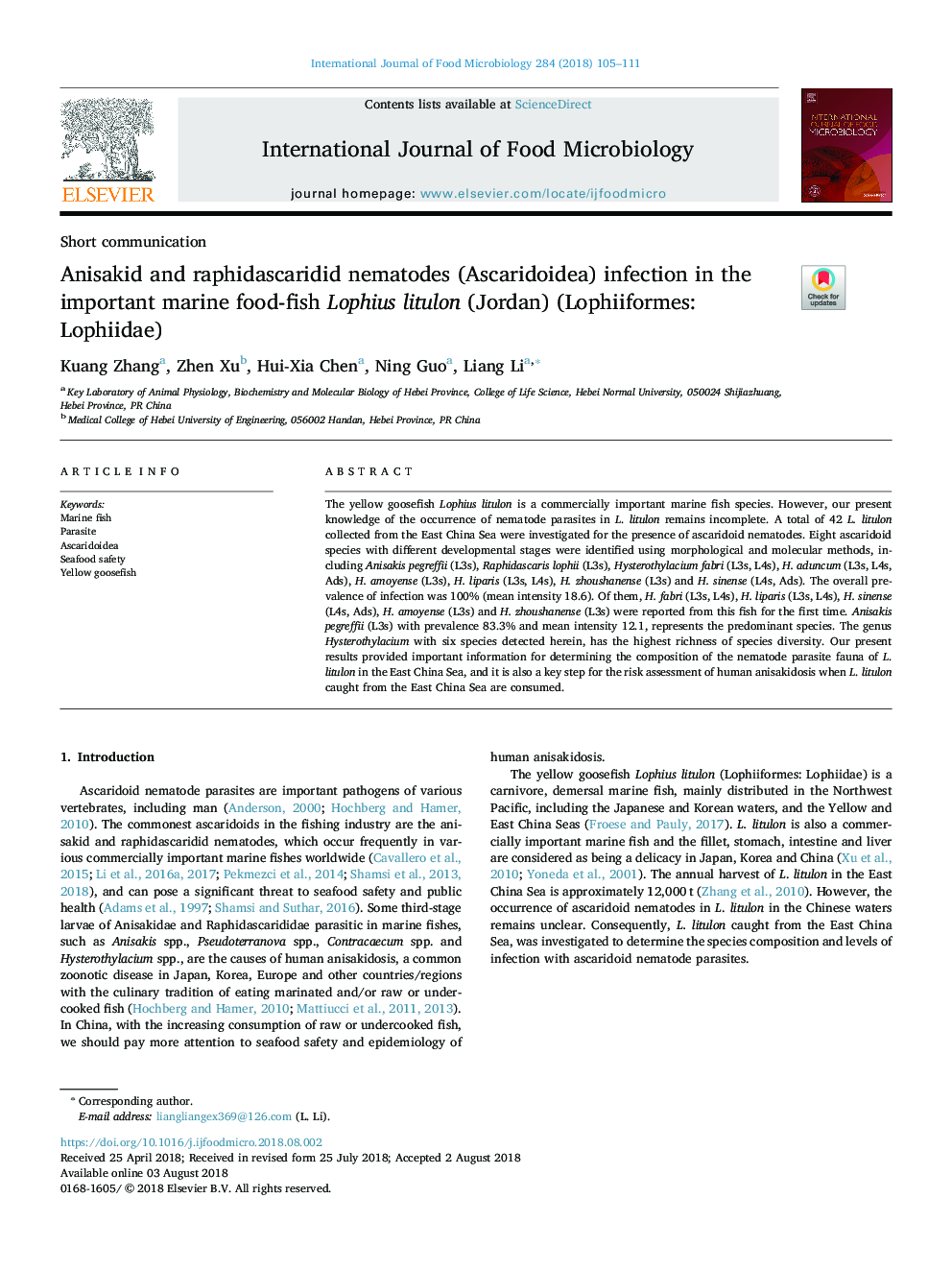| Article ID | Journal | Published Year | Pages | File Type |
|---|---|---|---|---|
| 8844097 | International Journal of Food Microbiology | 2018 | 7 Pages |
Abstract
The yellow goosefish Lophius litulon is a commercially important marine fish species. However, our present knowledge of the occurrence of nematode parasites in L. litulon remains incomplete. A total of 42 L. litulon collected from the East China Sea were investigated for the presence of ascaridoid nematodes. Eight ascaridoid species with different developmental stages were identified using morphological and molecular methods, including Anisakis pegreffii (L3s), Raphidascaris lophii (L3s), Hysterothylacium fabri (L3s, L4s), H. aduncum (L3s, L4s, Ads), H. amoyense (L3s), H. liparis (L3s, L4s), H. zhoushanense (L3s) and H. sinense (L4s, Ads). The overall prevalence of infection was 100% (mean intensity 18.6). Of them, H. fabri (L3s, L4s), H. liparis (L3s, L4s), H. sinense (L4s, Ads), H. amoyense (L3s) and H. zhoushanense (L3s) were reported from this fish for the first time. Anisakis pegreffii (L3s) with prevalence 83.3% and mean intensity 12.1, represents the predominant species. The genus Hysterothylacium with six species detected herein, has the highest richness of species diversity. Our present results provided important information for determining the composition of the nematode parasite fauna of L. litulon in the East China Sea, and it is also a key step for the risk assessment of human anisakidosis when L. litulon caught from the East China Sea are consumed.
Keywords
Related Topics
Life Sciences
Agricultural and Biological Sciences
Food Science
Authors
Kuang Zhang, Zhen Xu, Hui-Xia Chen, Ning Guo, Liang Li,
